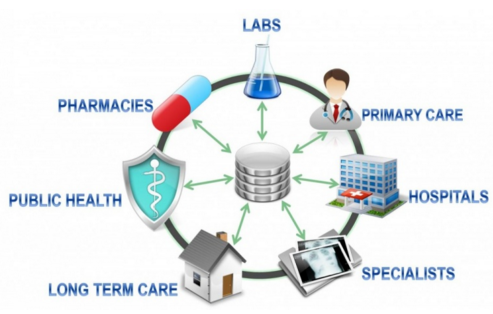Technology Innovations and its impact on patient portals
There is very little doubt that the pace at which new innovative technology is impacting our daily lives is increasing. Technologists often observe that today we have more computing power in our pockets than NASA had on the moon missions. Many people indicate that their iPhone is the first thing and the last thing they look at everyday—which is telling of how connected we have become with technology.
These technologies are beginning to allow healthcare practitioners and organizations to offer lower cost, faster and more efficient patient care than ever. Traditionally, the healthcare industry has been overburdened by slow moving innovation due to the complexity of the medical ecosystem. Technology has begun to infiltrate the healthcare profession, and we are seeing significant changes as a result.
2016 may be one of the biggest years for healthcare technology, with innovations in medical devices, software, and changes in how healthcare is administered, both from a care and financial perspective. A majority of this growth is due to the growing adoption of various healthcare IT solutions. The need to reduce cost of care, meet regulatory requirements for patient care and safety, improve outcomes, and maintain operational efficiency are also often cited as drivers for IT adoption.
An interoperability solution for exchanging patient information across care settings is  one particular technological development that will shape the future of healthcare organizations. Value-based care and health information exchanges are an important part of the overall healthcare landscape. The ability for all providers to have access to a complete health record; from general practitioners, specialists, and acute care organizations, to post-acute care organizations, etc. – will only grow as a critical component of care delivery in the future. The timing to standardize the context of patient portals seems to be in alignment with the future of interoperability.
one particular technological development that will shape the future of healthcare organizations. Value-based care and health information exchanges are an important part of the overall healthcare landscape. The ability for all providers to have access to a complete health record; from general practitioners, specialists, and acute care organizations, to post-acute care organizations, etc. – will only grow as a critical component of care delivery in the future. The timing to standardize the context of patient portals seems to be in alignment with the future of interoperability.
By standardizing the context of patient portals into the interoperability strategies, healthcare organizations and providers can ensure that critical patient information across all care settings will be connected, providing a more detailed patient picture for more specific treatment plans and improved patient care.
Health Informatics. More than half of US hospitals use some type of electronic records  system. Electronic records streamline the medical care process, lower malpractice claims, and increase coordination between providers. Improvements still need to be made in communication of patients between facilities and providers. These communication gaps can increase costs, and lower patient outcomes. Standardization of patient portals can help close those communication gaps. If patients have access to their portal and are required to input certain data, they will have a better understanding of their situation and specific needs to enable more effective dialog with providers to get the care they need.
system. Electronic records streamline the medical care process, lower malpractice claims, and increase coordination between providers. Improvements still need to be made in communication of patients between facilities and providers. These communication gaps can increase costs, and lower patient outcomes. Standardization of patient portals can help close those communication gaps. If patients have access to their portal and are required to input certain data, they will have a better understanding of their situation and specific needs to enable more effective dialog with providers to get the care they need.
I recently had the pleasure to interview Sally Schlak, Chief Nursing Informatics Officer from Cerner Corporation. She indicated that technology vendors are committing substantial research and development funding to data analysis. This investment will enable practitioners and medical researchers to apply data analysis to develop new insights into finding cures for difficult diseases. She also stated that healthcare Chief Information Officers and other IT leaders can expect to be called upon to manage all the new data and devices that will be transforming healthcare as we know it today.
Implications for data and privacy: The security and privacy of personal health information is the most significant unintended outcomes of EHRs. In February 2016, a California Hospital was challenged with this issue. IT hackers intercepted Presbyterian Medical Center’s IT system and followed with a payment of $17,000 to reopen their IT network. Beyond the financial implications of this event it was very disruptive to the operations of the organization. Additionally, in March 2016, Methodist Hospital in Henderson, Kentucky was also intercepted by IT hackers. Their response, however, to similar ransomware demands was to shut down their IT networks, and pay nothing.
information is the most significant unintended outcomes of EHRs. In February 2016, a California Hospital was challenged with this issue. IT hackers intercepted Presbyterian Medical Center’s IT system and followed with a payment of $17,000 to reopen their IT network. Beyond the financial implications of this event it was very disruptive to the operations of the organization. Additionally, in March 2016, Methodist Hospital in Henderson, Kentucky was also intercepted by IT hackers. Their response, however, to similar ransomware demands was to shut down their IT networks, and pay nothing.
Building a culture of Health IT Privacy and Security is what is necessary to achieve cybersecurity in which everybody has a role is creating such a culture. The federal government has put several safeguards in place to decrease the risk of security and privacy breaches. The American Recovery and Reinvestment Act (ARRA) offer financial incentives for healthcare businesses to meet its privacy guidelines, and punishment for people and businesses that fail. It also requires health care providers to safeguard the security and confidentiality of medical records.
Education and training to consumers, providers and healthcare organizations, as well as improvements to security standards in H-IT products are necessary in order to mitigate the risk of future security breaches. As is always the case with technological innovation, there will be bumps in the road. You had to carry around a marginally functional brick as a cell phone for a few years to get to that shiny iPhone in your pocket today.
References:
American Recovery and Reinvestment Act ( 2013). Retrieved from: https://www.fcc.gov/general/american-recovery-and-reinvestment-act-2009
Cerner Corporation (2016). Retrieved from: http://www.cerner.com/solutions/Hospitals_and_Health_Systems/
Becker’s Hospital Review (2016). Retrieved from: http://www.beckershospitalreview.com/healthcare-information-technology/hackers-shut-down-hollywood-presbyterian-medical-center-it-systems-demand-3-6-million-ransom.html
Becker’s Hospital Review (2016). Retrieved from: http://www.beckershospitalreview.com/healthcare-information-technology/to-pay-or-not-to-pay-ransom-a-tale-of-two-hospitals.html
